When I first practiced chakra yoga, I was amazed at how calm and light I felt afterward. It made me realize yoga is more than stretching; it’s also about connecting breath, energy, and awareness.
This type of yoga focuses on the body’s seven energy centers, and by working with them, you can support both your mind and body.
If you’ve been searching for ways to ease stress, sharpen focus, or bring more balance into your day, chakra yoga offers simple and helpful tools. Here, I’ll explain the seven chakras, share poses and breathing techniques for each, and give you easy steps to try at home.
My goal is to make chakra yoga clear, practical, and useful for daily life.
Understanding Chakra Yoga
Chakra yoga is a practice that combines poses, breathwork, and meditation to balance the body’s energy centers.
Each chakra relates to physical, emotional, and mental well-being, and yoga offers tools to keep them aligned. This approach links movement with focused breathing and mindful awareness, creating a system that supports health inside and out.
The concept of chakras originates from ancient Hindu and Buddhist traditions, where they are viewed as vital energy points along the spine that influence the life force and awareness.
The Chakras and Their Yoga Poses
1. Root Chakra (Muladhara)
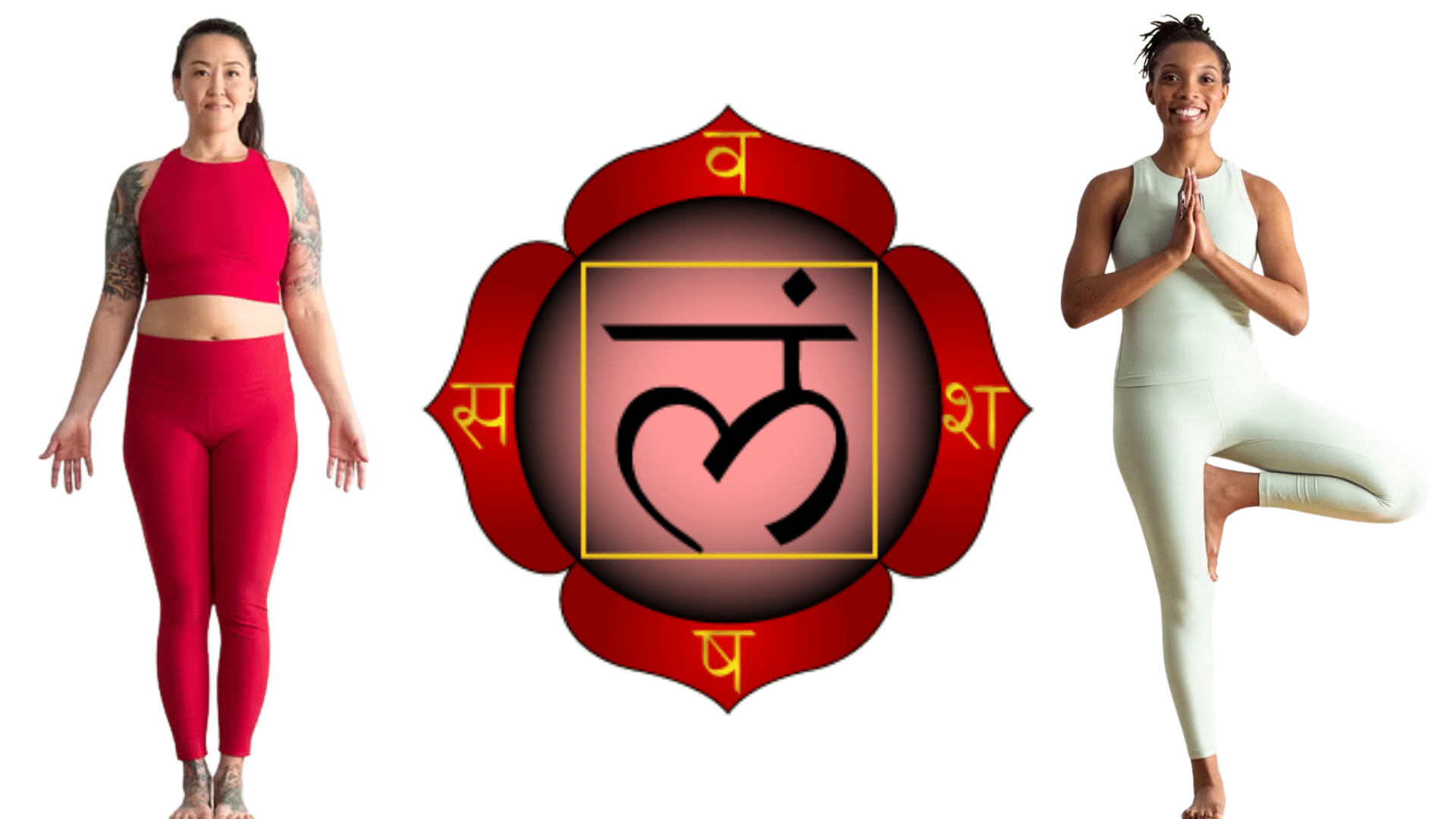
Location: Base of the spine
Color: Red
Purpose: Grounding, stability, security
Imbalance Signs: Anxiety, restlessness, financial fears
Yoga Focus: Grounding postures and breath awareness
Recommended Poses: Mountain, Tree
How to do:
- Mountain: Stand tall with steady feet and arms by your side, focusing on balance and breath.
- Tree: Press one foot to the opposite thigh or calf, hands together at the chest, and hold steady.
Beginner Tip: Use a wall for Tree Pose, or place a block under your back in Bridge.
2. Sacral Chakra (Svadhisthana)
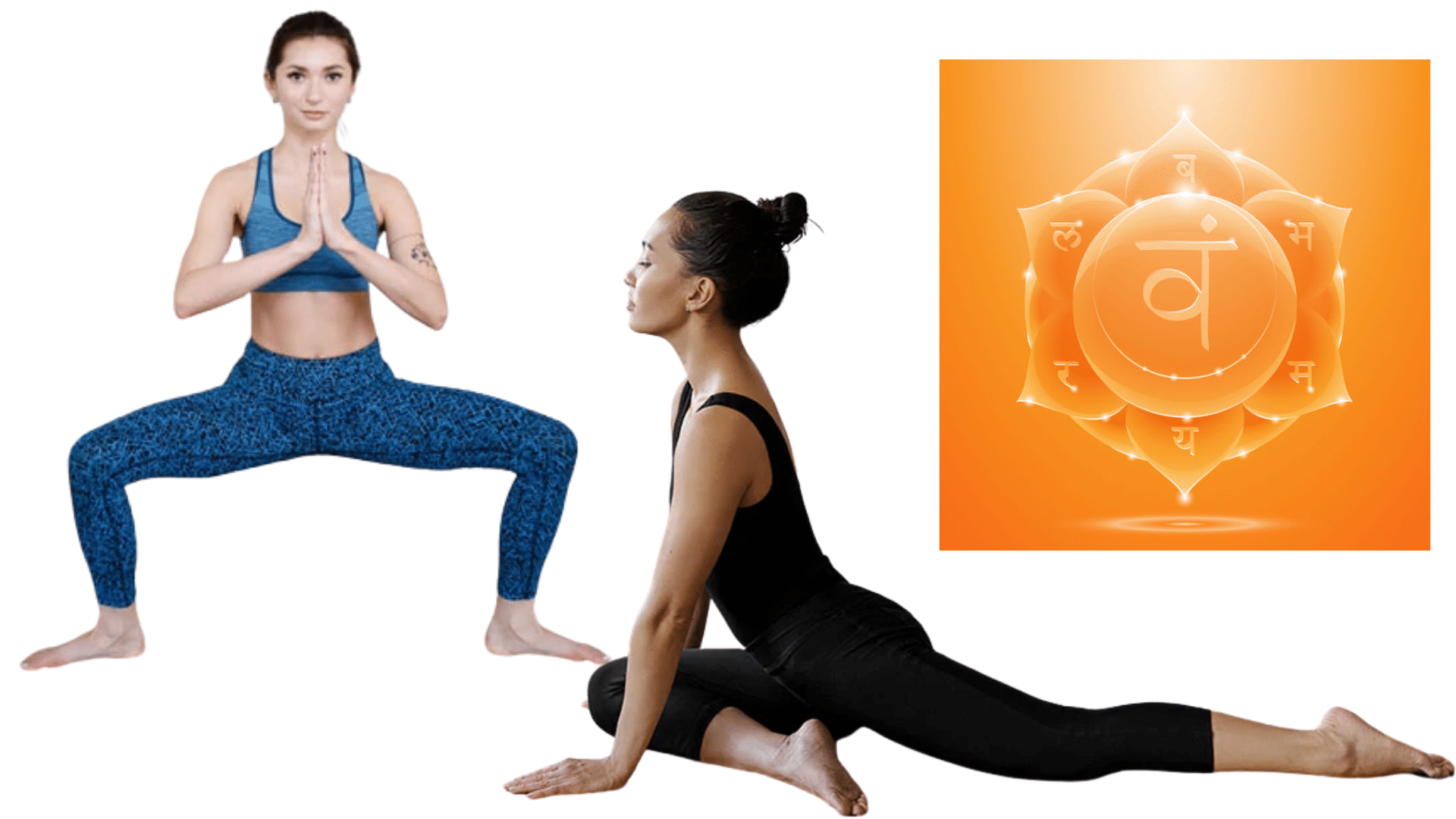
Location: Lower abdomen, below the navel
Color: Orange
Purpose: Creativity, emotions, relationships
Imbalance Signs: Lack of creativity, guilt, intimacy issues
Yoga Focus: Hip-openers and fluid movements
Recommended Poses: Goddess, Pigeon
How to do:
- Goddess: Stand wide, bend your knees, lower into a squat, and stretch arms outward or overhead.
- Pigeon: Bring one leg forward with the shin angled, extend the other leg back, and fold forward slowly.
Beginner Tip: Place a cushion under the hips in Pigeon for support.
3. Solar Plexus Chakra (Manipura)
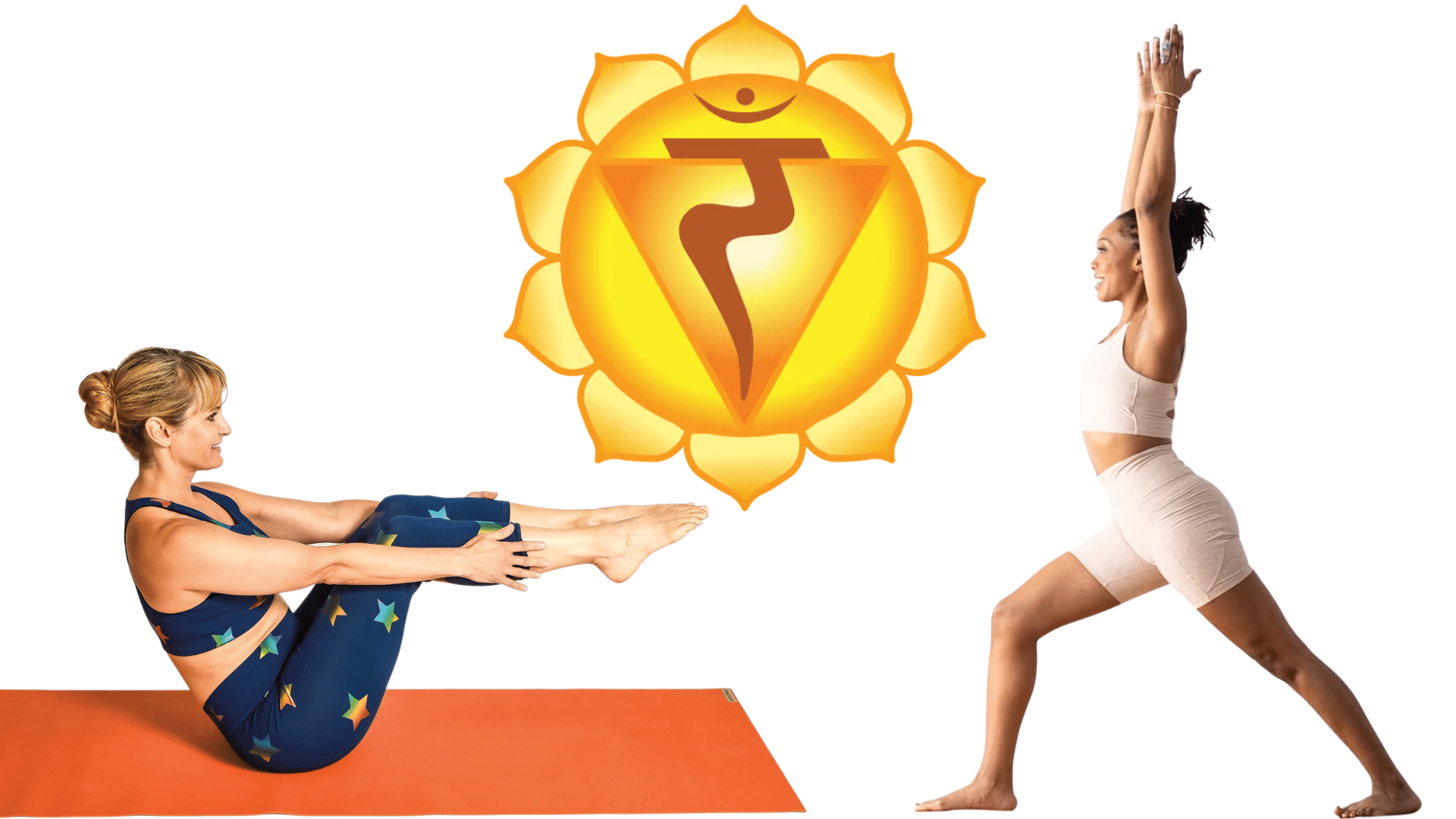
Location: Upper abdomen
Color: Yellow
Purpose: Confidence, willpower, and digestion
Imbalance Signs: Low self-esteem, digestive discomfort
Yoga Focus: Core strength and twists
Recommended Poses: Boat, Warrior I
How to do:
- Boat: Sit on the floor, lift legs to a V-shape, and balance on your sitting bones while engaging the core.
- Warrior I: Step one foot forward, bend the knee, square the hips, and lift arms overhead.
Beginner Tip: Bend knees in Boat Pose for more support.
4. Heart Chakra (Anahata)
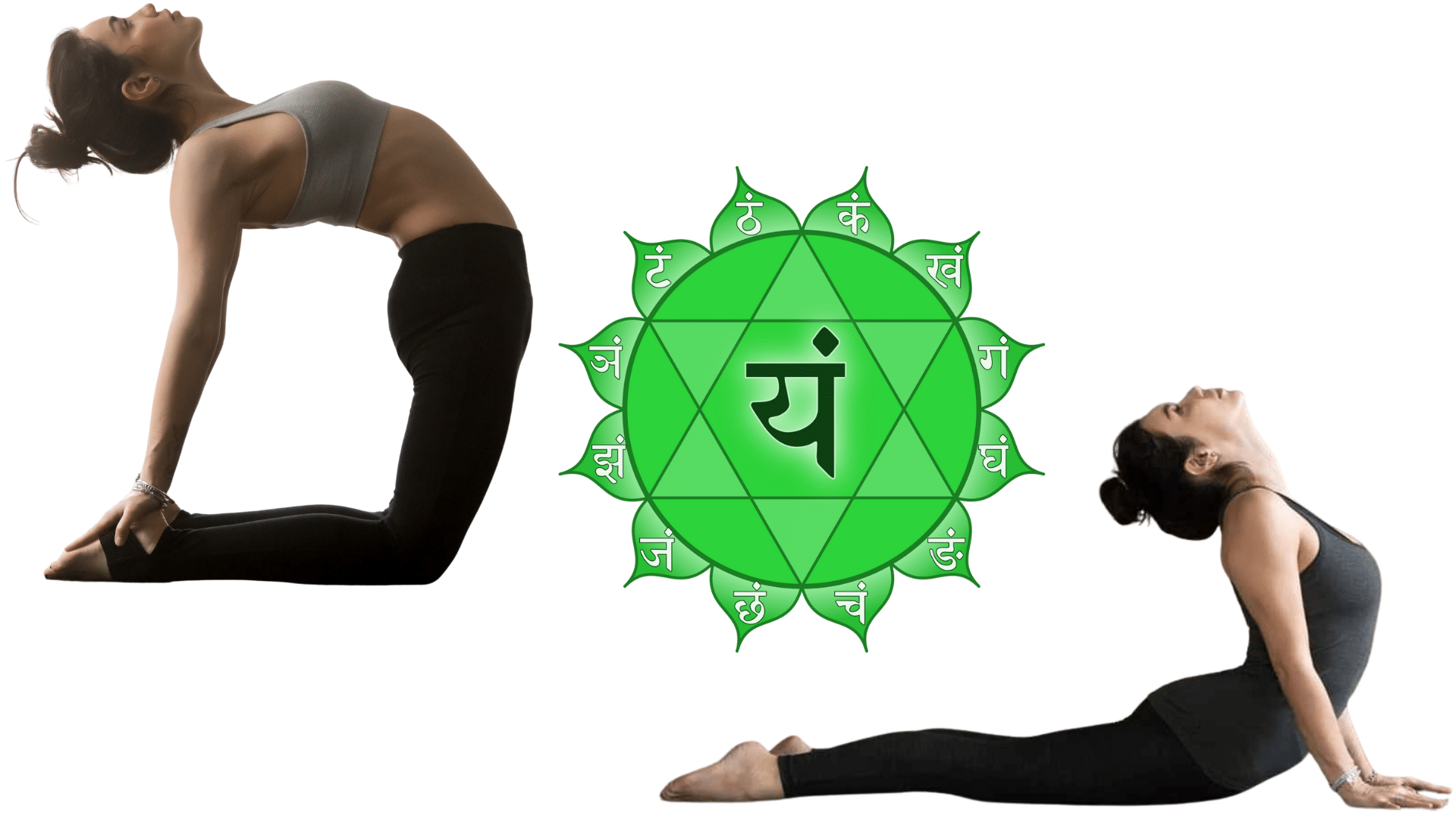
Location: Center of the chest
Color: Green
Purpose: Love, compassion, connection
Imbalance Signs: Loneliness, anger, poor boundaries
Yoga Focus: Chest openers and backbends
Recommended Poses: Camel, Cobra
How to do:
- Camel: Kneel on the mat, press hips forward, and reach hands back toward the heels or lower back.
- Cobra: Lie on your stomach, place your hands under your shoulders, press into the mat, and lift the chest upward.
Beginner Tip: Keep your hands on your lower back in the Camel instead of reaching for your heels.
5. Throat Chakra (Vishuddha)

Location: Throat
Color: Blue
Purpose: Communication, self-expression
Imbalance Signs: Difficulty speaking, sore throat
Yoga Focus: Neck stretches and supported inversions
Recommended Poses: Plow, Fish
How to do:
- Plow: Lie on your back, lift your legs overhead, and rest your feet on the floor behind your head.
- Fish: Recline back on your forearms, open the chest, and allow the head to drop gently back.
Beginner Tip: Support shoulders with a folded blanket in Plow.
6. Third Eye Chakra (Ajna)
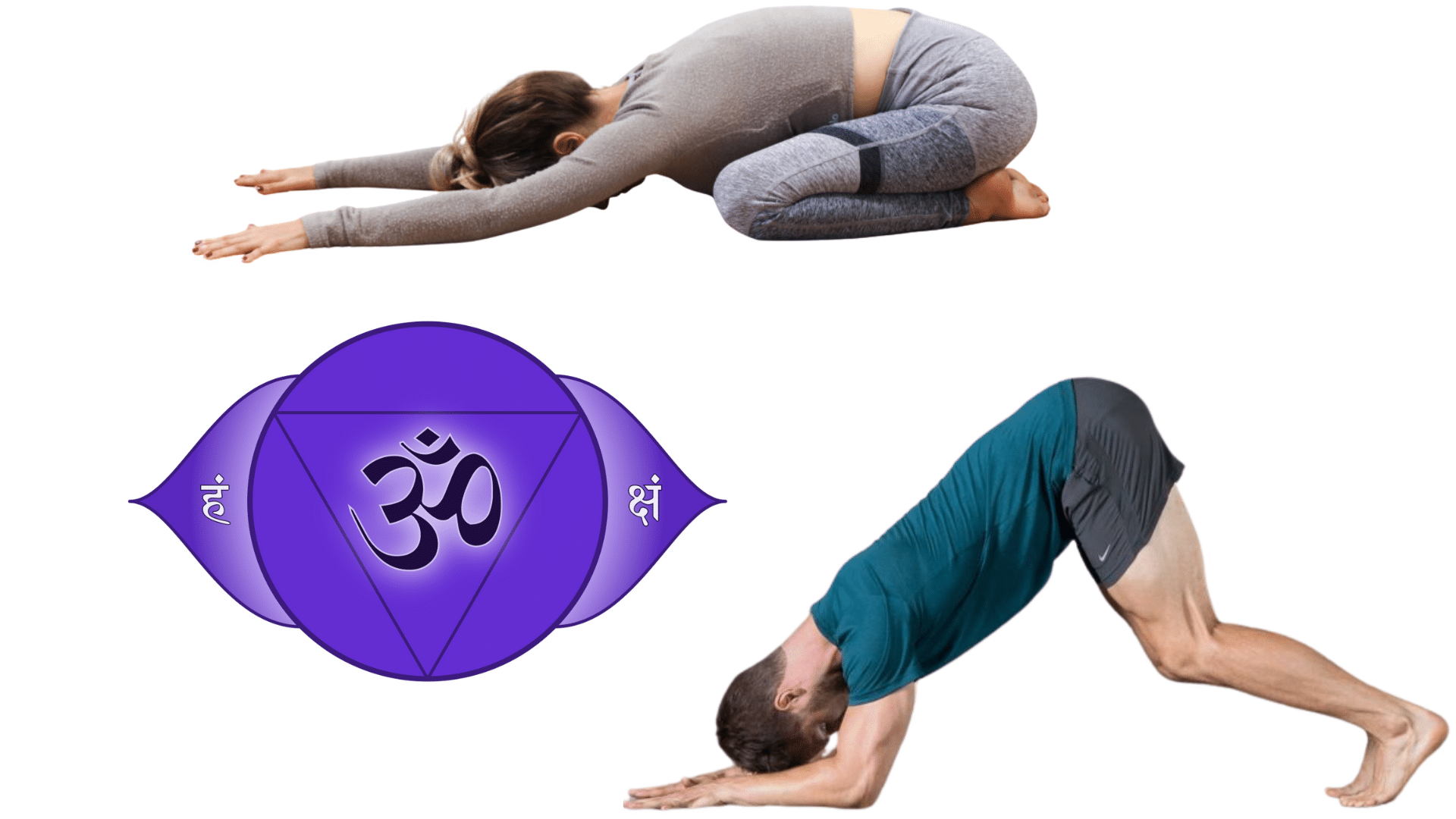
Location: Between the eyebrows
Color: Indigo
Purpose: Intuition, clarity, imagination
Imbalance Signs: Headaches, lack of focus
Yoga Focus: Forward folds and meditation postures
Recommended Poses: Child’s Pose, Dolphin
How to do:
- Child’s Pose: Sit on heels, fold forward, and rest your forehead on the floor with arms extended or at your sides.
- Dolphin: Come onto forearms, tuck toes, lift hips high, and form an inverted V-shape like Downward Dog.
Beginner Tip: Place a pillow under the torso in Child’s Pose.
7. Crown Chakra (Sahasrara)
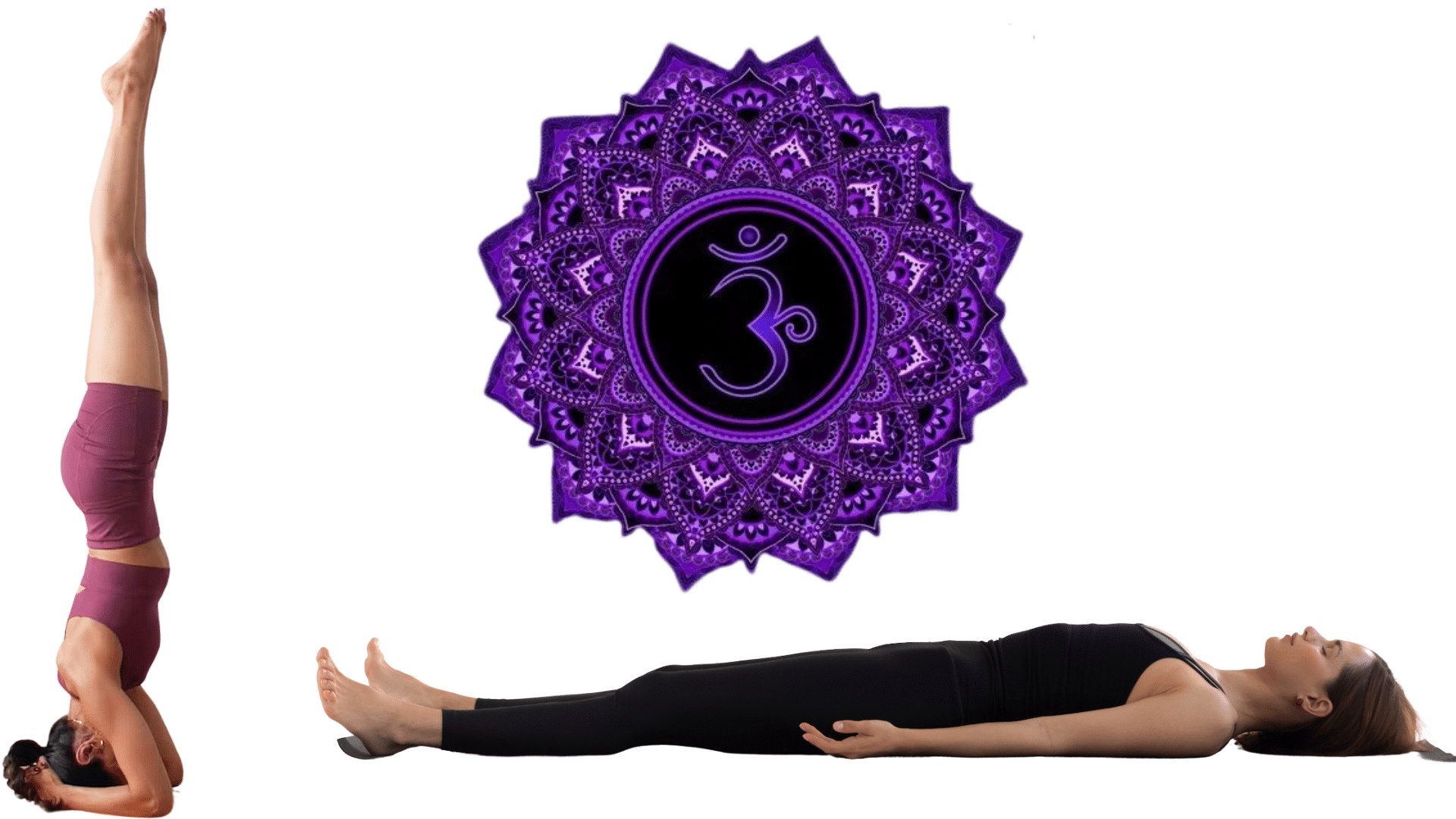
Location: Top of the head
Color: Violet or White
Purpose: Spiritual connection, higher awareness
Imbalance Signs: Disconnection, apathy
Yoga Focus: Inversions and stillness
Recommended Poses: Headstand, Savasana
How to do:
- Headstand: Balance on forearms with head supported, lift legs overhead slowly, and hold with core strength.
- Savasana: Lie flat on your back, arms relaxed at your sides, and focus on steady, natural breathing.
Beginner Tip: Replace Headstand with Legs-Up-the-Wall if new to yoga.
How Chakra Yoga Works
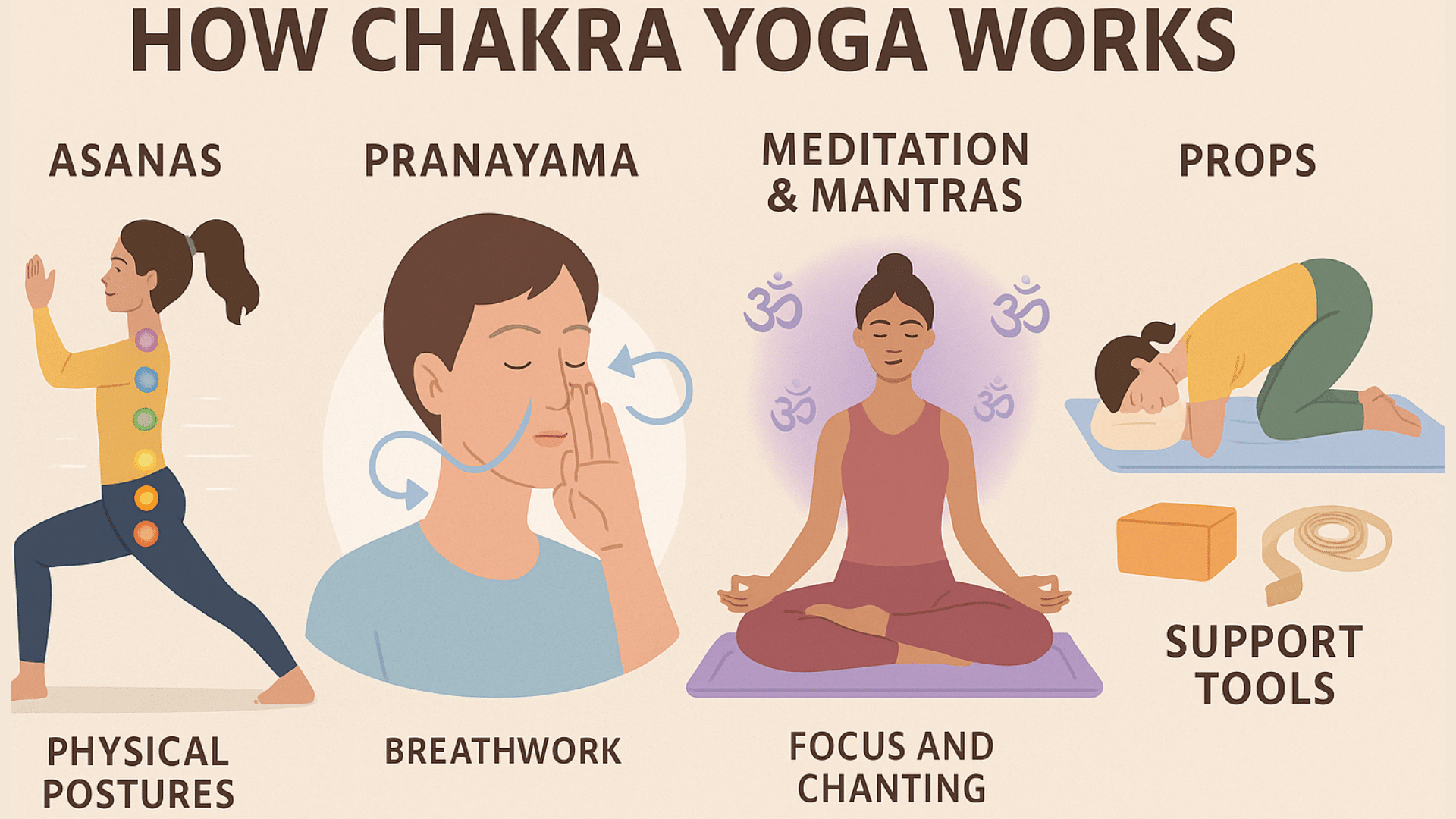
Chakra yoga works by combining movement, breath, and focus to balance energy centers, improving health, emotional stability, and awareness.
Asanas: Physical Postures That Target Energy Centers
Asanas are yoga poses designed to stimulate specific chakras along the spine. Each posture encourages energy to flow freely, supporting balance and stability.
Practicing these movements with mindful awareness helps release tension, strengthen the body, and align physical health with emotional and mental well-being. They serve as the foundation of chakra yoga practice.
Pranayama: Breathwork to Purify and Balance
Pranayama uses controlled breathing techniques to regulate energy. Deep, steady breaths calm the nervous system and clear blocked energy paths.
Practices like alternate nostril breathing and belly breathing purify the body and balance emotions. By linking breath with focus, pranayama harmonizes the chakras, creating a state of relaxation and clarity for both body and mind.
Meditation & Mantras: Focus, Chanting, and Visualization
Meditation and mantras work together to quiet the mind and connect with inner awareness. Visualization helps focus on each chakra’s energy, while chanting sounds like “Om” vibrate through the body, restoring harmony.
These practices guide the mind inward, fostering clarity, peace, and spiritual connection. They strengthen the link between breath, movement, and energy centers in chakra yoga.
Beginner-Friendly Guidance
Starting chakra yoga can feel easier when you take small steps. Begin with simple poses and short sessions instead of long flows. Use props like blocks, straps, or cushions to stay comfortable and safe.
If you have stiff hips, a tight back, or sore shoulders, choose modified versions of postures. Always listen to your body, avoid forcing movements, and rest when needed.
This approach builds confidence, reduces strain, and helps you practice regularly without feeling overwhelmed or discouraged.
Benefits of Chakra Yoga
Chakra yoga offers wide-ranging benefits for both body and mind, supporting balance, relaxation, growth, and deeper spiritual awareness.
- Improves flexibility, circulation, and nervous system balance: Regular practice strengthens the body, improves blood flow, and calms the nervous system.
- Reduces stress and aids sleep: Gentle poses, breathwork, and meditation lower stress hormones, relax the body, and support deeper, more restful sleep.
- Supports emotional healing: By releasing blocked energy, chakra yoga eases tension, balances emotions, and encourages a healthier, more positive outlook.
- Builds self-awareness and spiritual connection: Focused practice deepens awareness of thoughts, emotions, and energy, fostering growth and connection beyond the physical body.
Scientific and Medical Perspective
Chakra yoga combines practices that science supports, even if chakras themselves are not medically proven.
For example, a study titled “Effects of Yoga on the Autonomic Nervous System, Gamma-Aminobutyric Acid, and Allostasis in Epilepsy, Depression, and Post-Traumatic Stress Disorder” by Streeter et al. (2012) found that yoga activates the parasympathetic nervous system, helping the body relax and recover from stress.
Another study, Effects of Different Types of Pranayama on Cardiovascular and Autonomic Variables by Nivethitha et al. (2016), showed that breathwork improves lung function, lowers blood pressure, and balances heart rhythms.
Mindfulness and meditation, essential parts of chakra yoga, were also highlighted in a large review, Meditation Programs for Psychological Stress and Well-being: A Systematic Review and Meta-analysis by Goyal et al. (2014), which confirmed benefits in reducing anxiety and depression.
These findings confirm the physical and mental value of the practices, while chakras themselves remain part of spiritual tradition. While these benefits are clear, it is important to note that chakras themselves are explained within spiritual traditions rather than scientific frameworks.
Daily and Weekly Practice Plans
Having a clear plan makes it easier to stay consistent with your yoga. Here’s a simple daily and weekly outline you can follow to keep your practice steady and balanced:
| Practice Type | Description |
|---|---|
| 10-Minute Daily Routine | A short sequence combining gentle poses, breathing, and meditation to quickly balance all seven chakras. |
| 20–30 Minute Practice | A deeper flow moving from Root to Crown with postures, breathwork, and short meditation for fuller alignment. |
| Weekly Focus | Dedicate each day to one chakra or rotate sequences for variety and balanced energy throughout the week. |
| Tips for Consistency | Use props, set reminders, and keep a journal to track feelings, energy, and progress in your practice. |
Sticking to these daily and weekly plans can make your practice steadier and rewarding. Remember, even short, regular sessions will add up over time and bring lasting benefits.
Common Misconceptions About Chakra Yoga
Many people hold mistaken beliefs about chakra yoga, which can lead to confusion or unrealistic expectations. One common myth is that chakras can be opened instantly, but in truth, balancing them takes steady practice over time, not a quick fix.
Another myth is that only advanced yogis benefit, when in fact beginners can practice safely with modifications and still experience real results. Some also think chakra yoga is only spiritual, but the poses, breathwork, and mindfulness bring measurable physical and mental health benefits too.
The reality is that consistency matters more than intensity; regular practice, even in short sessions, is far more effective than occasional bursts of effort.
How to Practice Chakra Yoga at Home
Practicing chakra yoga at home doesn’t have to be complicated. With just a few mindful steps like these, you can begin to balance your energy and feel more centered:
- Set up a quiet space: Choose a calm spot with minimal distractions.
- Begin with breathwork: Take slow, deep breaths to settle your mind.
- Focus on one chakra at a time: Use poses or visualizations linked to each center.
- Add sound or mantra: Soft chanting or humming can deepen the practice.
- End with relaxation: Spend a few minutes lying down to let the effects sink in.
By keeping the practice simple and consistent, you can bring the benefits of chakra yoga into your daily routine.
Conclusion
Chakra yoga has made a big difference in how I handle stress and find focus, and I believe it can help you too.
By practicing simple poses, breathwork, and meditation, you give yourself space to restore energy and reconnect with what matters.
The key isn’t doing everything perfectly; it’s showing up for yourself, even with just a few minutes each day. I encourage you to start small, use the tips you’ve learned here, and notice how your body and mind respond.
If you’re ready to find more, check out other yoga and wellness blogs on the website for ideas to keep your practice fresh and inspiring!





